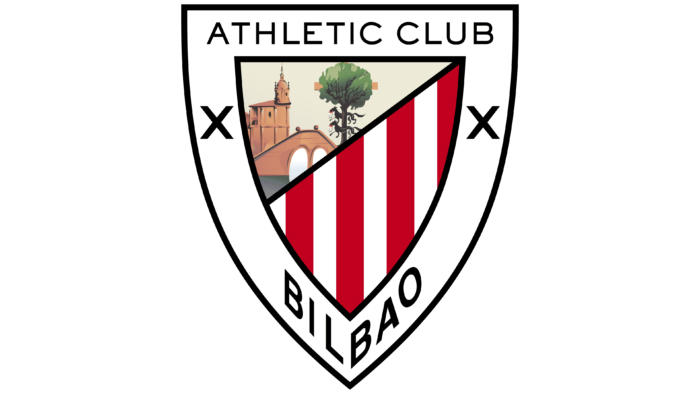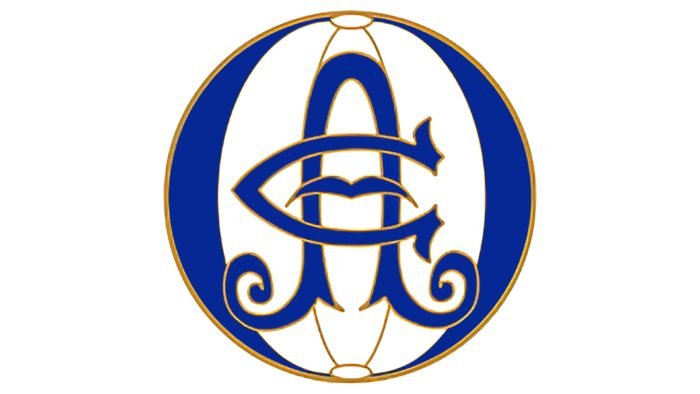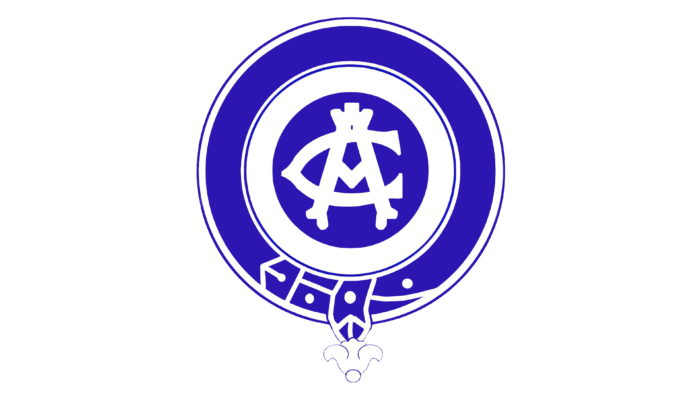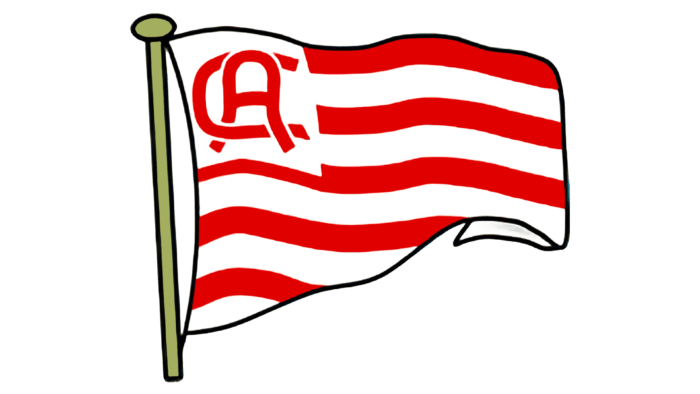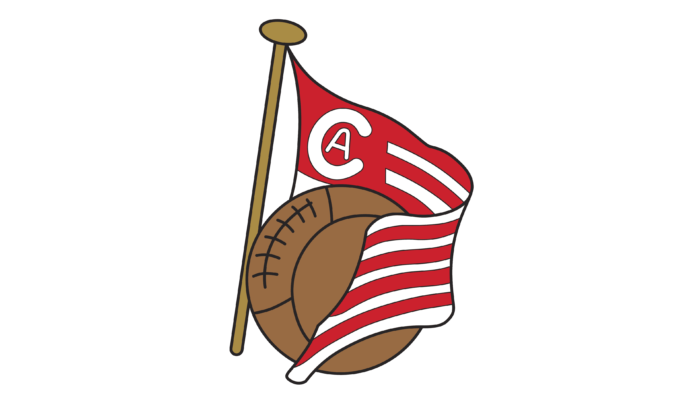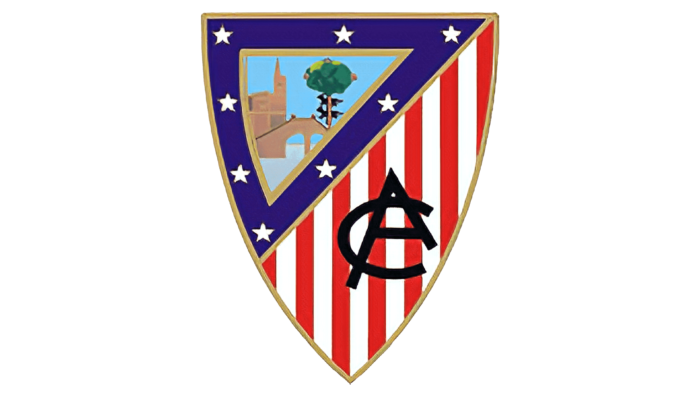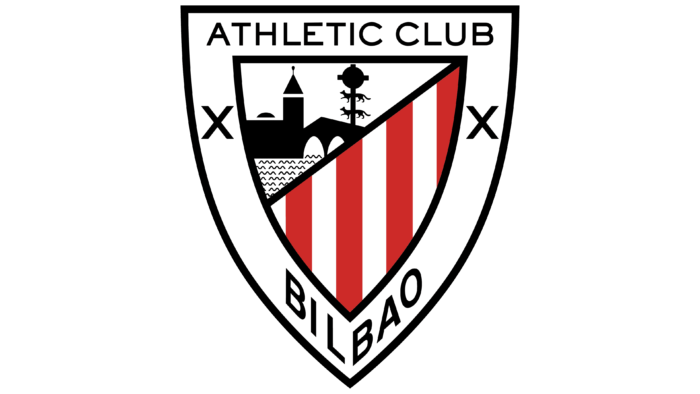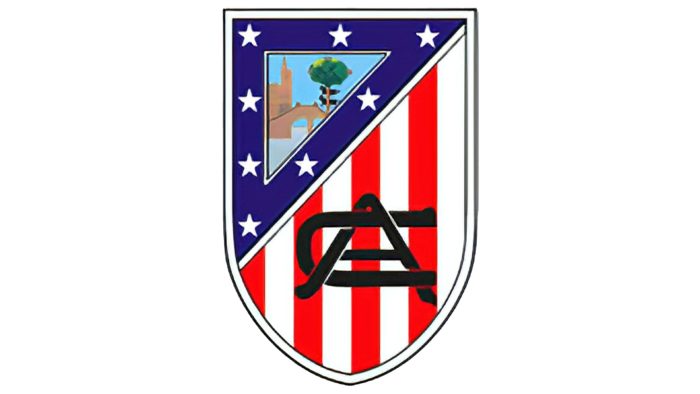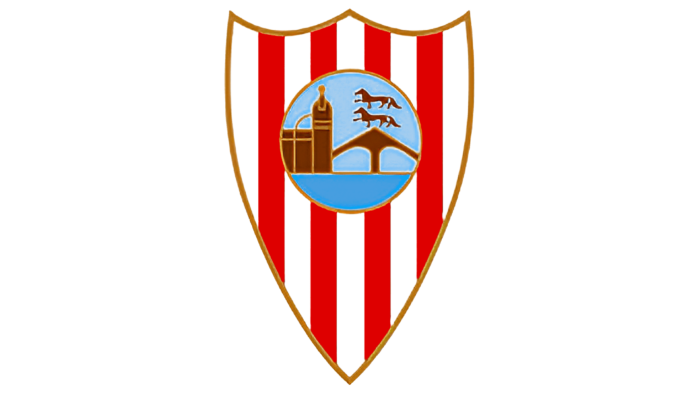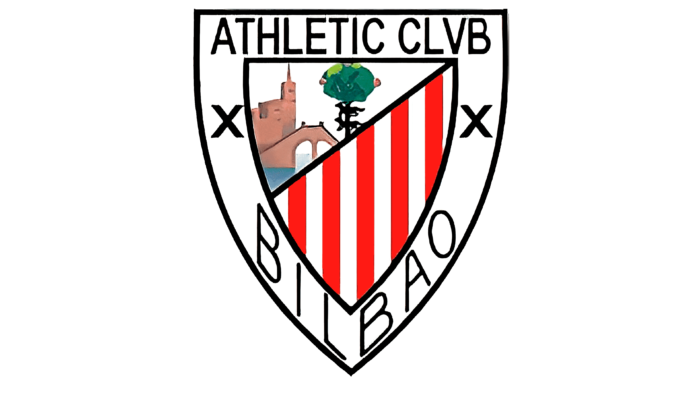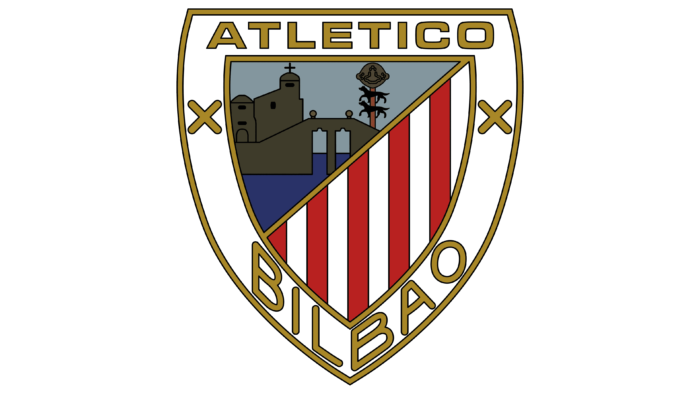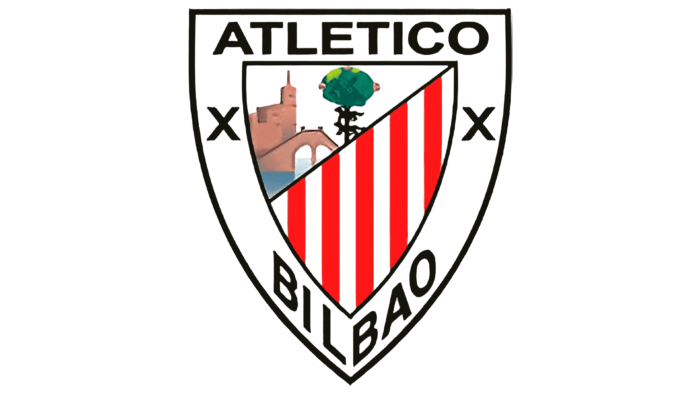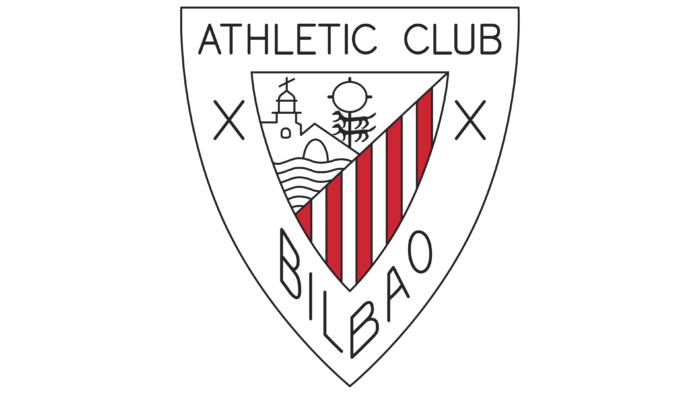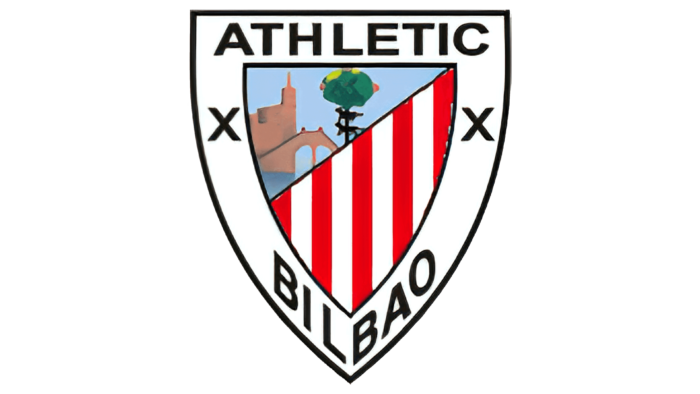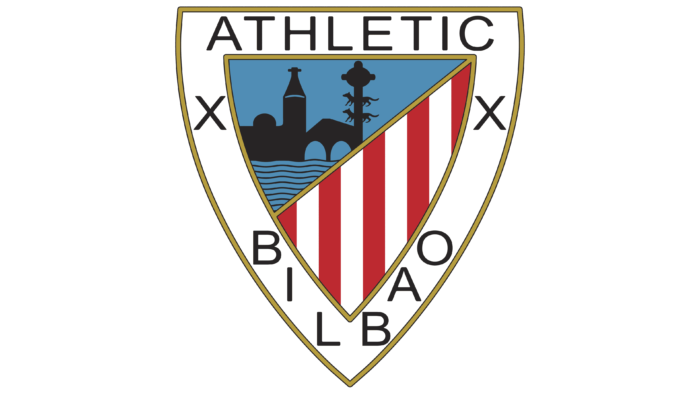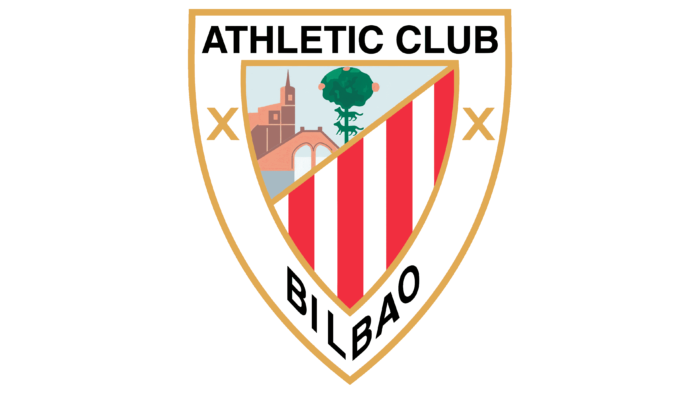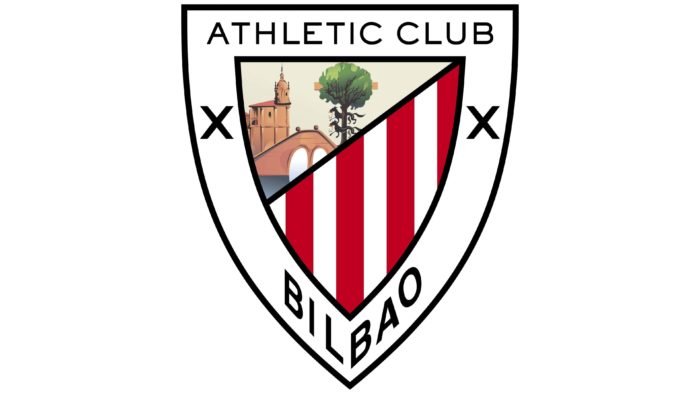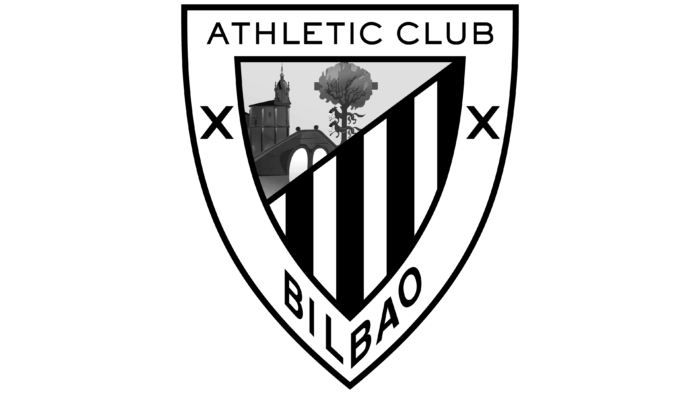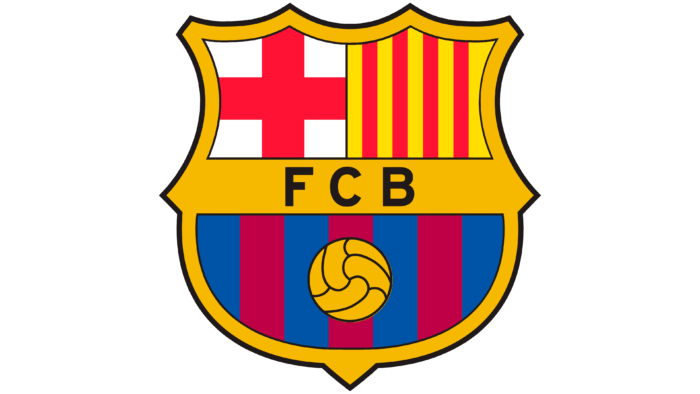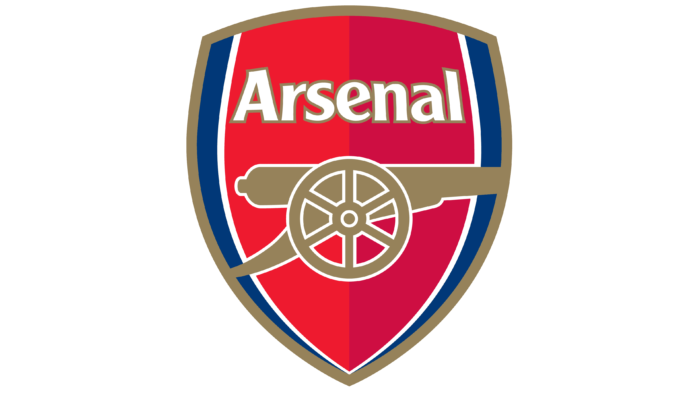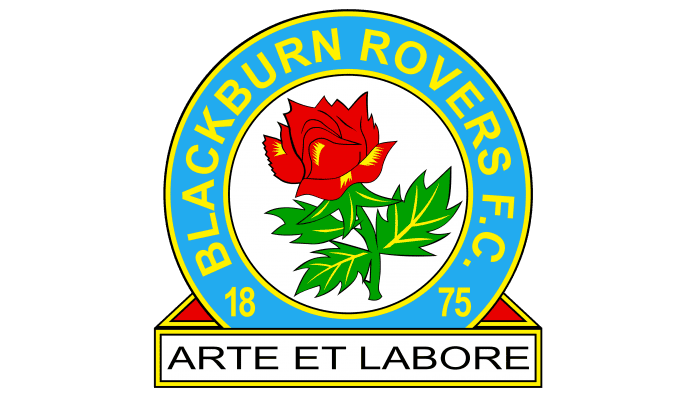The Athletic Bilbao logo represents the football team’s autonomy, defending the interests of a specific territory. Outsiders are not allowed in the club. The players form a cohesive team, united by a love for their homeland and football.
Athletic Bilbao: Brand overview
| Founded: | 1898 |
| Headquarters: | Bilbao, Spain |
| Website: | athletic-club.eus |
Meaning and History
The club’s emblem includes regional symbols, another aspect of its patriotism. It reflects opposition to dictator Francisco Franco’s regime, which suppressed any expression of Basque national identity. Franco ruled the state from 1939 to 1975, which did not affect Athletic Bilbao’s visual identity.
What is Athletic Bilbao?
Athletic Bilbao, a Spanish professional football team, is also known as Athletic Club or Athletic Club de Bilbao. Founded in 1898 and based in the Basque Country, it ranks just below Barcelona in terms of league titles and prestigious awards. The club is one of the three founders of the Primera Division.
1901 – 1903
The first emblem combined a football and the initials “AC” (originally called Athletic Club), artistically rendered in blue, gold, and white.
1903 – 1910
The monogram evolved over time, and the ball became a roundel surrounded by a blue and white belt.
1910 – 1912
Coach Juan Elorduy, inspired by the red and white uniform of Southampton during his travels in England, decided to use these colors in Athletic Bilbao’s emblem, as they were also on the Basque Country flag.
1912 – 1922
The second version of the pennant logo featured a large brown football.
1917 – 1922
The first emblem with regional symbolism appeared in 1917. The top of a triangular shield displayed the Gernika Tree, San Anton Bridge, and Saint Anton Church, enclosed in a blue frame with five-pointed stars. The white and red vertical lines at the bottom resembled the US flag.
1922 – 1930
The prototype of the modern graphic sign appeared: a triangular shield with a wide white border, two crosses, and “ATHLETIC CLUB BILBAO.” Basque symbols remained part of the emblem since 1917.
1922 – 1936
The emblem from 1917-1922 returned, now as a rectangular shield with a round base. The red and white horizontal lines became wider, and the black “CA” monogram enlarged.
1930
Club symbols (two wolves and Bilbao landmarks) were placed inside a blue circle, which was centered in a red and white triangular shield with vertical stripes.
1930 – 1941
The 1922 logo returned, identical to the original, but with a green oak crown and brown bridge and cathedral.
1941 – 1942
Francisco Franco’s ban on foreign names forced the club to change its name to “Atletico Bilbao,” which is reflected in the logo. The inscription and outlines were gold, with a blue background behind the Basque symbols.
1942 – 1970
Designers simplified the graphics again, returning to black outlines and a white background. The “Atletico Bilbao” font also slightly changed.
1970 – 1973
After Franco’s regime ended, the club reverted to its original name and logo. However, the Basque symbols were depicted schematically with simple black lines.
1973 – 1980
The new version of the logo was identical to the 1942-1970 version, except for a blue triangle and a slight shift in the red and white lines.
1980 – 1983
The outlines were gold, the Basque symbols were black, and their background was blue.
1983 – 1995
Minor changes occurred in the color palette, making it more diverse, though all shades were light.
1995 – today
The current logo has black outlines and a completely white background.
Athletic Bilbao: Interesting Facts
- Basque Players Only: Athletic Bilbao only picks players from the Basque region or those who learned soccer there. This shows how much they value their local area and its people.
- Always Top-Tier: Since La Liga started in 1929, Athletic Bilbao, along with Real Madrid and Barcelona, has never dropped to a lower division. That’s a big deal and shows they’ve always been good at soccer.
- Winning a Lot: Although they only pick local players, Athletic Bilbao has won many trophies, including La Liga eight times and the Copa del Rey 23 times.
- Great Youth Academy: Their youth academy, Lezama, is famous for training some good players who have become soccer stars.
- San Mamés Stadium: Their stadium, “La Catedral,” is a special place for the team. They built a new one right next to the old one in 2013 to keep their history alive.
- Big Rivalry: They have a big rivalry with Real Sociedad, another team from the Basque region. Their games are always exciting and a big deal for fans.
- King’s Cup Success: Athletic Bilbao won the very first Copa del Rey in 1903 and has won it 23 times in total. They’re good at this competition.
- Unique Way of Picking Players: The team must look carefully for talent in its area because of their rule about only picking Basque players. This keeps the team close to its fans and the local community.
- Famous Leaders: The team has had some amazing captains, like Telmo Zarra, who scored many goals and was loved for his great attitude and loyalty.
- More Than Just Soccer: Athletic Bilbao also does a lot to keep Basque culture and language alive. They’re a big part of the community in soccer and promoting their local culture worldwide.
Athletic Bilbao isn’t just a soccer team; they’re a big part of the Basque region, sticking to their traditions while being good at soccer.
Font and Colors
The team openly displays its nationality, using an emblem with Basque symbols: the Gernika Tree, Saint Anton Church, and San Anton Bridge. The tree symbolizes the autonomy of the Basque Country, and the architectural structures are among Bilbao’s landmarks. Two wolves from the city’s coat of arms are depicted next to the tree. Two crosses on the shield are borrowed from the coat of arms of the Biscay province, with Bilbao as its administrative center.
The phrase “ATHLETIC CLUB” is written in a sans serif font, with a distinctive shortened stroke in the center of the letter “E.” The word “BILBAO” is at the bottom of the deformed shield. The main colors are red, white, black, gray, several shades of green, and a rich brown palette.
Athletic Bilbao color codes
| Lust | Hex color: | #e30013 |
|---|---|---|
| RGB: | 227 0 19 | |
| CMYK: | 0 100 92 11 | |
| Pantone: | PMS Bright Red C |
| Middle Red | Hex color: | #e58670 |
|---|---|---|
| RGB: | 229 134 112 | |
| CMYK: | 0 41 51 10 | |
| Pantone: | PMS 170 C |
| Dark Salmon | Hex color: | #ed9771 |
|---|---|---|
| RGB: | 237 151 113 | |
| CMYK: | 0 36 52 7 | |
| Pantone: | PMS 163 C |
| Pastel Red | Hex color: | #ed7369 |
|---|---|---|
| RGB: | 237 115 105 | |
| CMYK: | 0 51 56 7 | |
| Pantone: | PMS 170 C |
| Middle Green | Hex color: | #589658 |
|---|---|---|
| RGB: | 88 150 88 | |
| CMYK: | 41 0 41 41 | |
| Pantone: | PMS 7731 C |
| Middle Green Yellow | Hex color: | #a7cb6a |
|---|---|---|
| RGB: | 167 203 106 | |
| CMYK: | 18 0 48 20 | |
| Pantone: | PMS 367 C |
| Black | Hex color: | #000000 |
|---|---|---|
| RGB: | 0 0 0 | |
| CMYK: | 0 0 0 100 | |
| Pantone: | PMS Process Black C |
